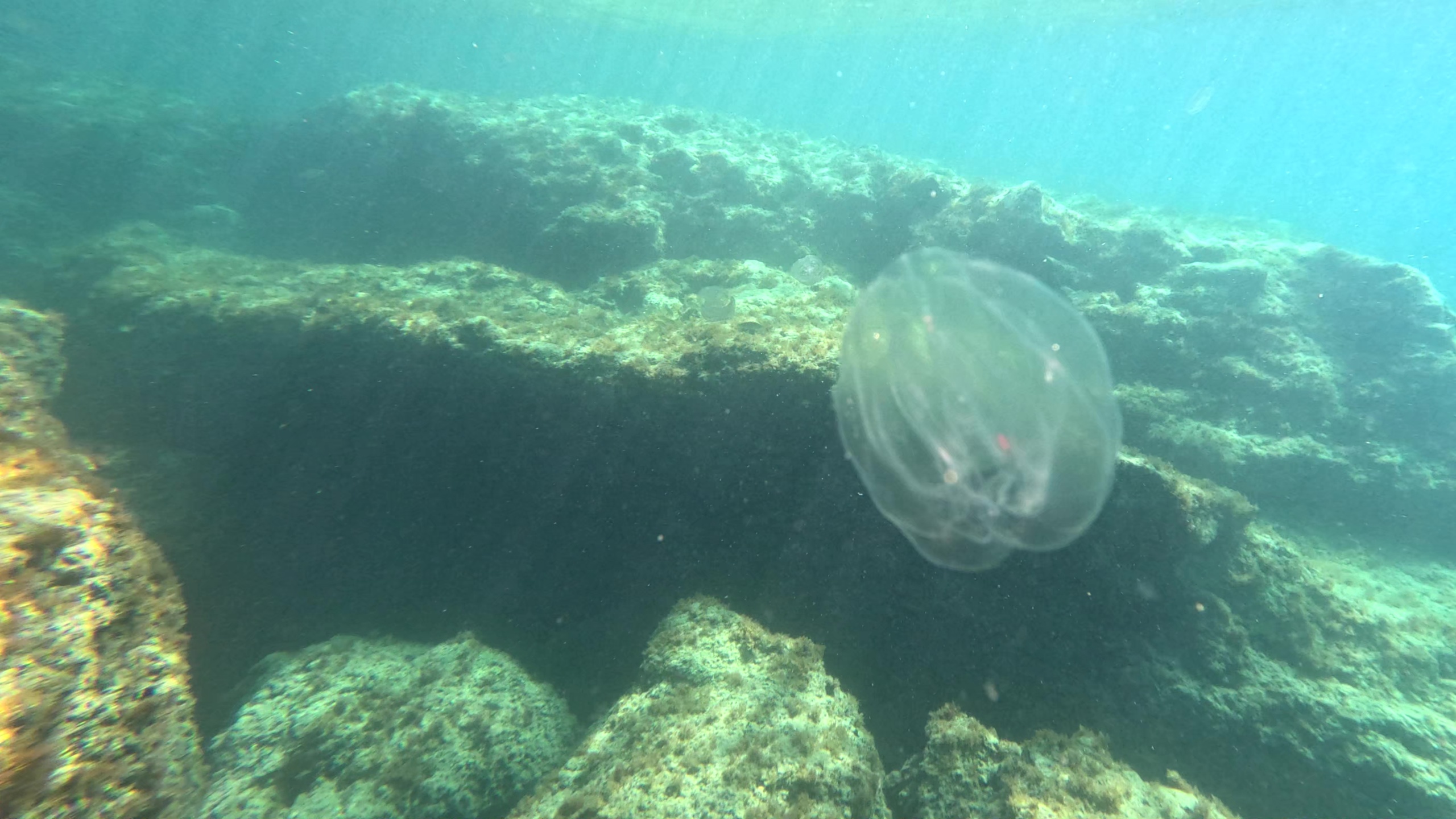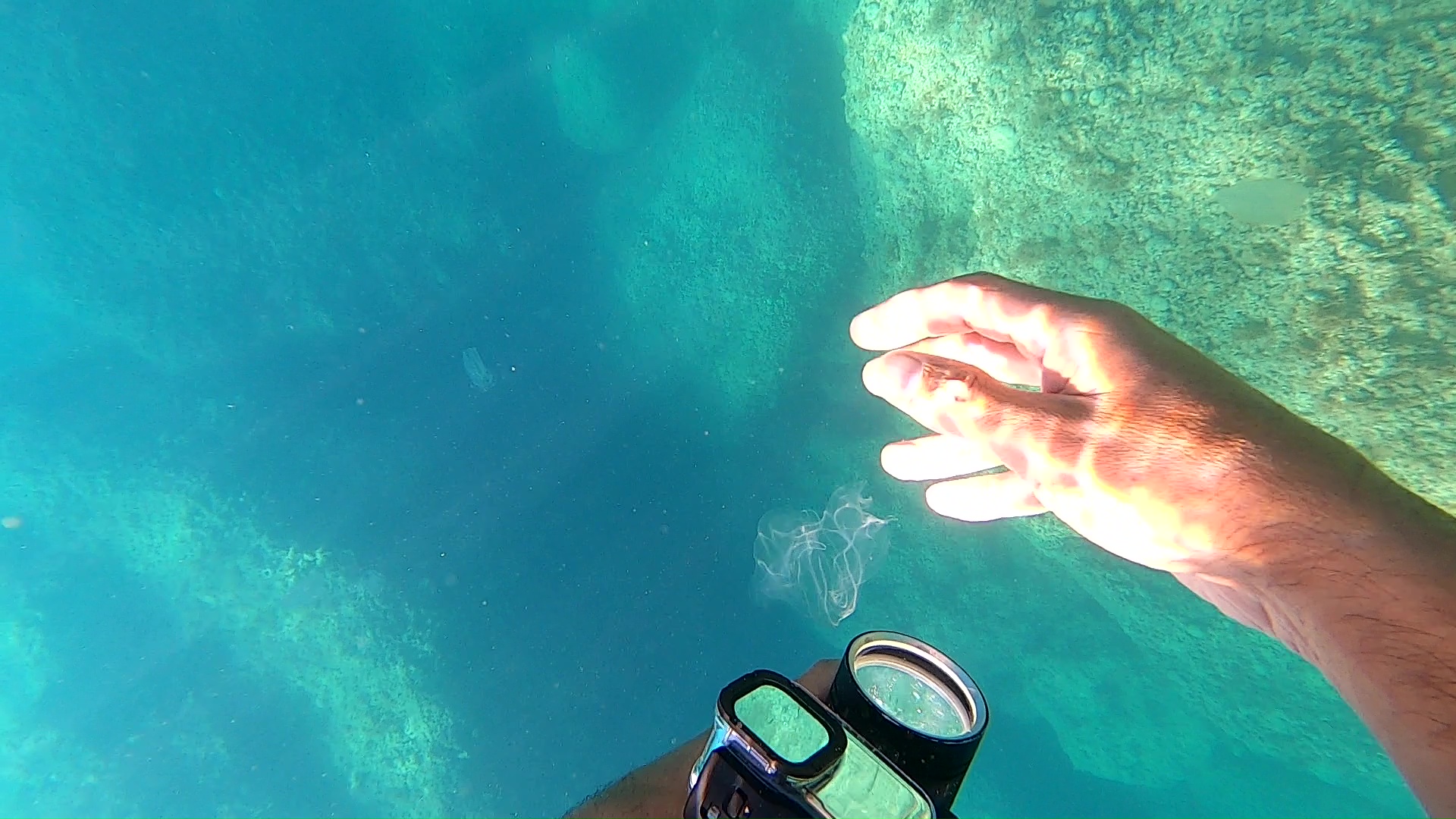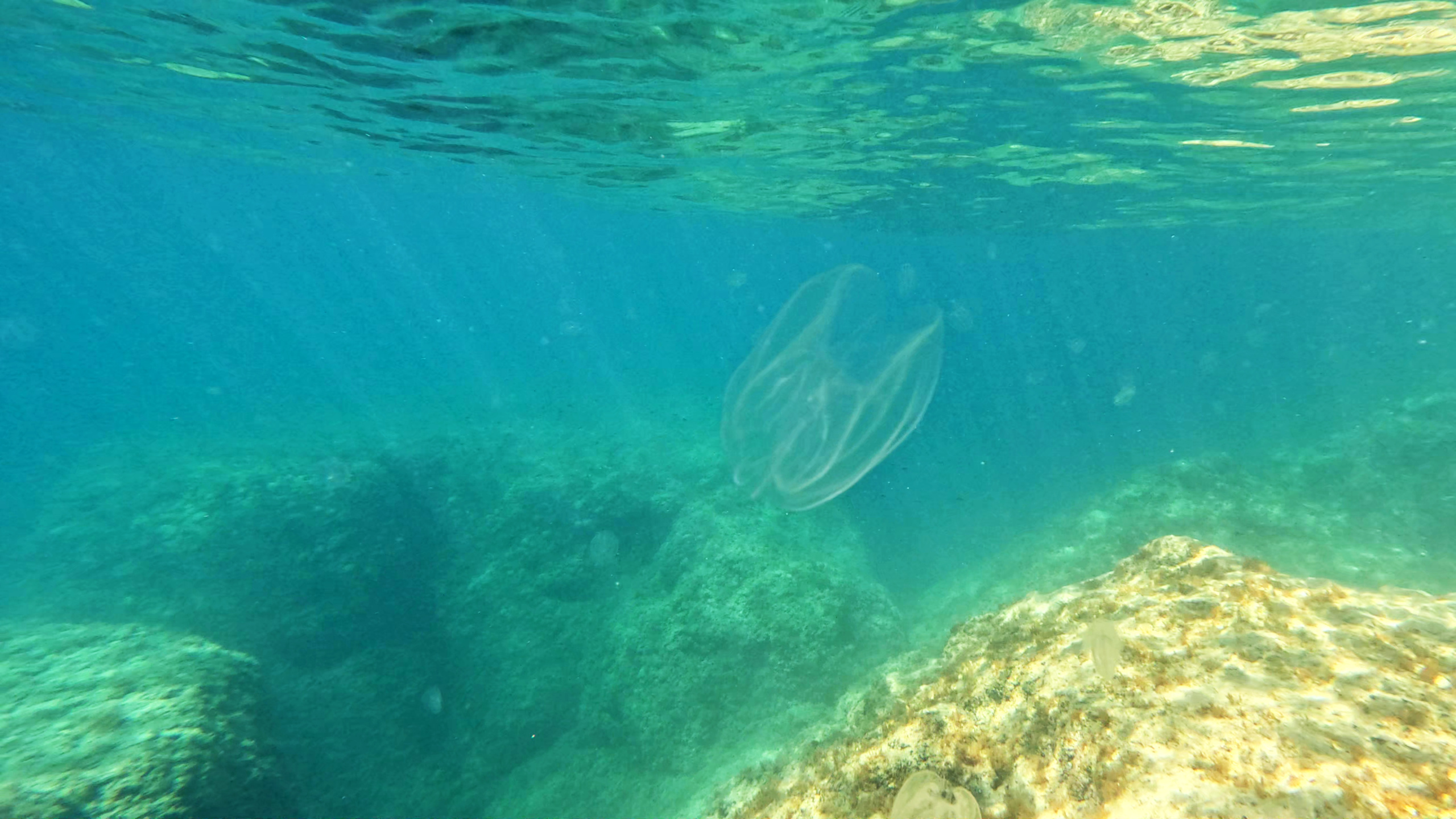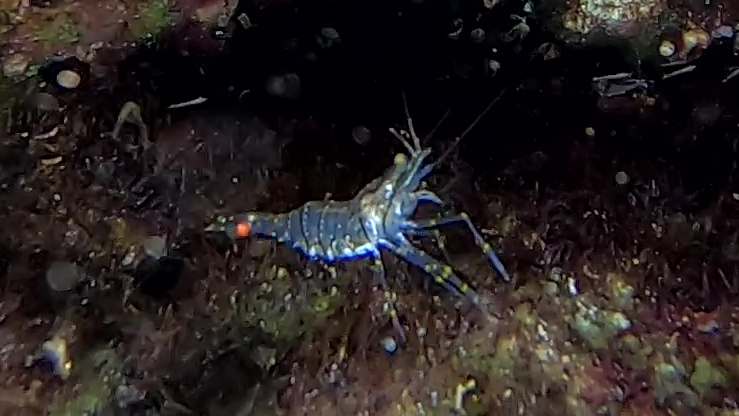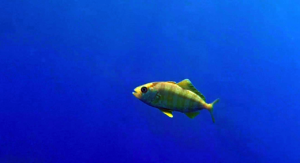The main objective of this site is to film and photograph the various marine species present in our Mediterranean Sea and, as can now be seen, also in the “other seas“. By publishing these videos, in a certain sense, even if we don’t want to, we are monitoring and documenting the state of health of the sea and the various ecosystems and habitats. Invasione Mnemiopsis leidyi Invasion www.intotheblue.it
And also this summer we found ourselves faced with the now regular invasion of the Sea walnut, Mnemiopsis leidyi (warty comb jelly or sea walnut). This phenomenon is becoming more and more frequent throughout the summers, and it is now clear that the main cause of these invasions is the increase in sea temperature.
The warming of the seas, caused by global warming, is favoring a northernization of the European range of Mnemiopsis leidyi. According to some estimates, in 2100 the ctenophore will also be able to colonize the seas of the Arctic, where predation on calanoids (an important food source for some whales, among others) could reach very impressive rates.
Sea walnut, (Mnemiopsis leidyi A. Agassiz, 1865) is a ctenophore belonging to the Bolinopsidae family. Two other species belong to the genus Mnemiopsis Agassiz, 1860: M. gardeni and M. mccradyi, with a different distribution area; the most accepted opinion, however, is that the three species are different zoological forms of M. leidyi even if they show a certain polymorphism due to environmental adaptations.
Description
Mnemiopsis is easily mistaken for a jellyfish due to its transparency, but it is far from being so. The transparent and oval body has six lobes, two of which are evident at first sight (each large lobe alternates with two small ones), on which rows of ciliated combs are arranged; two rows for each large lobe and only one for each small lobe. These eyelashes glow a blue-green light when stimulated by light or touch.
It uses its numerous tentacles to feed itself, but unlike cnidarians, they are not stinging for humans: they are adhesive colloblasts that do not emit any toxins and are arranged along two long and thin tentacles that float in the water. The entire body is made up of 97% water and is small in size: it measures approximately 7–12 centimeters long by 2.5 cm wide.
Distribution and habitat
It is a species native to the Atlantic introduced with ballast water from tankers in the Black Sea, where it has been observed since the late 1980s. Subsequently the species was observed in the Caspian Sea starting from 1997. Over time it also colonized other seas: in the 1990s the ctenophore was observed in the Aegean Sea from which, after 10 years of latency, it began to expand up to colonize the entire Mediterranean.
Dangerousness
Mnemiopsis has been included in the list of the 100 most harmful invasive species in the world. The damage is due to its prolificacy and its zooplankton-based diet. It has been calculated, for example, that its presence is at the origin of the 80% decline in zooplankton in the Caspian Sea. Its introduction into the Black Sea has had strong repercussions on the environment and the economy. In other seas its impact has been important, even if less, probably due to the presence of predators or other planktophages. The harmfulness derives from the consequences of its development (it adapts very easily to new environments, withstanding large temperature variations), since the decrease in zooplankton directly or indirectly reduces local fish populations.
https://it.wikipedia.org/wiki/Mnemiopsis_leidyi
https://en.wikipedia.org/wiki/Mnemiopsis
Gallery
 English
English Italiano
Italiano
